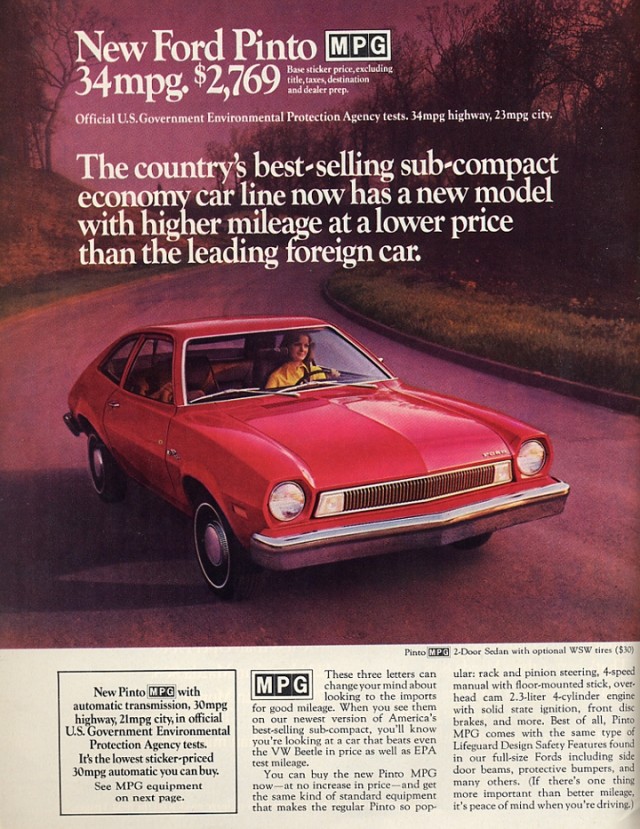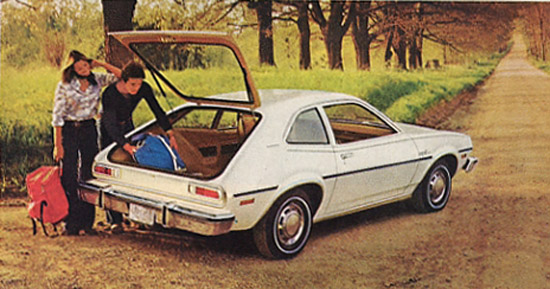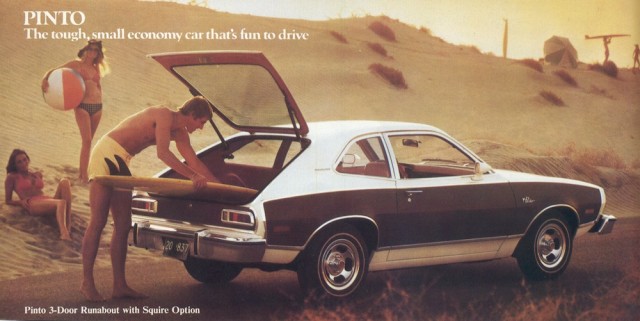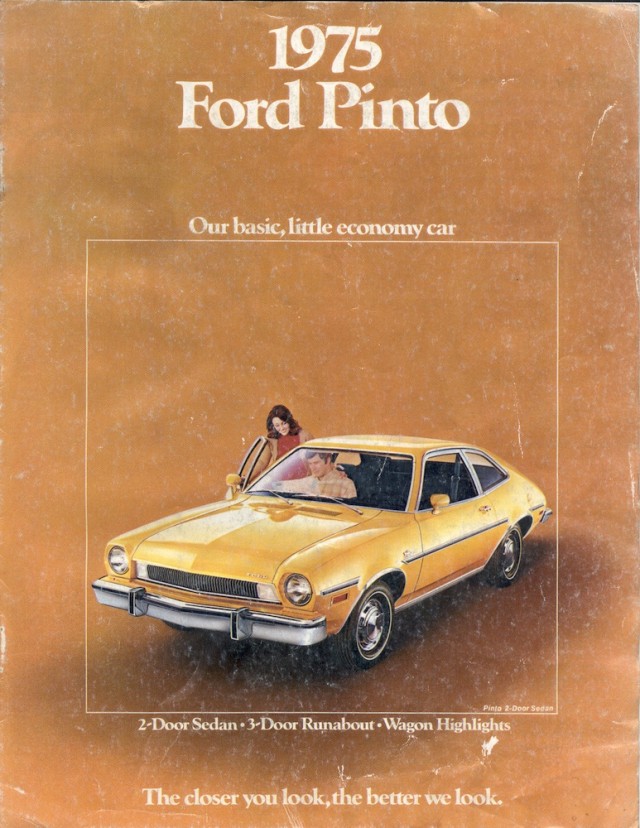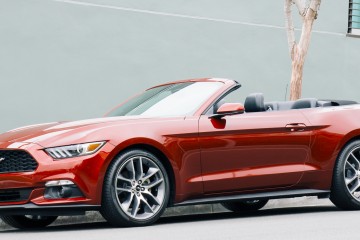What is the Ford Pinto to you? For many people who were adolescents in the 70s, it was a ticket to freedom, nightmare on wheels, love shack, hot rod, the list goes on, and on. To me, it was the first car that I ever knew as a bringer of fiery death. My dad explained how impact from the rear would cause the fuel tank to rupture, can’t remember how, or when the subject came up for the first time, but I know that it was at an unusually young age because I remember thinking that if a Pinto got rear ended, it would explode in fantastic blockbuster fashion. You can imagine my disappointment when I did some research, and discovered that not only does the Pinto in fact not explode like it’s loaded with semtex, but it wasn’t any more dangerous than other cars of the era. You can read all about the legal cases, and media hype that helped ingrain people’s distaste for the quirky car. There are many parallels one could draw to events currently capturing the attention of consumers worldwide, though I won’t be the one to tell you who is right, and who is wrong in either instance. What I can say beyond a shadow of a doubt is this, the ’74-’78 Pintos are the ones to get if you’re in thinking about picking one up.
The first three model years of the Pinto were good for Ford, they sold over 100,000 units by January 1971, not bad for a car that had gone from concept to production in just 22 months. A month later Ford introduced a hatchback version marketed as the Runabout, which is the Pinto most people think of when they hear the name thanks to the signature oversize piece of glass at the rear. The following year a Pinto wagon was introduced, and is arguably the oddest of the lineup, it being a two door station wagon and all. By 1974 it was time for a re-fresh, and this is where things start to get funky, both for the Pinto, and for America.
With the oil crisis at its peak, the Pinto was just the right car at just the right time. Ford sold over half a million of them in 1974, 544,209 to be exact, and they could only dream of having such success for the rest of the cars’ life. The ’74 model year saw the introduction of the T88-series “Lima”, 2.3L inline 4cyl that would go on to power various Ford vehicles for the next 23 years. It was a damn good motor then, and it is a damn good motor now. The turbocharged version that showed up in Thunderbirds and Mustangs in the 80s makes for an interesting choice of engine swap in a Pinto, if you don’t believe me, consult YouTube. Ford added a 2.8L V6 to the lineup, to give the Pinto a better shot at the AMC Gremlin, and while it wasn’t as powerful as the Gremlin, it at least gave buyers a choice they didn’t have with the Chevy Vega.
Domestic competition was tough, but it was imports from Japan that Ford really had to be concerned about. Though it was originally conceived to be a direct competitor to the VW Beetle, the Pinto had a lot more in common with early Civics and Corollas. I’d say that both are far better looking vehicles than the Pinto, no matter what body style you choose, and the collector market seems to agree with me. Both of those cars have rabid fanbases, while the Pinto enthusaist community is, well I’m sure they’re out there somewhere. I can’t help but wonder how sales of the Pinto would have been effected had racism towards Japan not been so prevalent in American society. You can shrug that off all you want, but I grew up hearing from a number of older folks that they wouldn’t buy Japanese cars because of WWII. I know that’s ridiculous, but it was the 1970s, ridiculousness is what the decade was all about.
By 1978 sales of the Pinto dropped to 188,899 units, despite the addition of the Pinto Cruising Wagon in 1977. The Cruising Wagon was a styled to resemble a conversion van, complete with a bubble window, and everything. I’ll be giving the late 70s van scene its due in the near future, for now I’ll just say that it is fascinating, and that I’m still mystified that it was a thing. With the introduction of the front wheel drive Fiesta in 1978, the Pinto became the second smallest Ford on sale in the U.S., and with the Fairmont on the way, the end was near. For some reason, Ford gave the Pinto a refresh in 1979, making it truly ugly with square headlights, and a cattle guard style grille.
When Forbes and Time both named the Pinto as one of the worst cars of all time, and Business Week named it as one of the ugliest cars of all time, I have to think they were talking about the ’79/’80 models. The styling of the ’70-’78 Pinto isn’t beautiful, but it surely isn’t up there with some of the all time ugly cars like the Pontiac Aztek, or any current Lexus. Bottom line is that the Pinto is a car that gets a bad rap, but ultimately has some redeeming qualities. A ’75 Station Wagon with the Squire option or ’78 Cruising Wagon with graphics are both ridiculous in the best possible way, and both should have place on a Malaise Era collector’s bucket list. For a full breakdown of models, original pricing, and production numbers, check out Pinto Car Club of America.
Find your Ford Pinto with AutoTempest!
(Article continues below)


